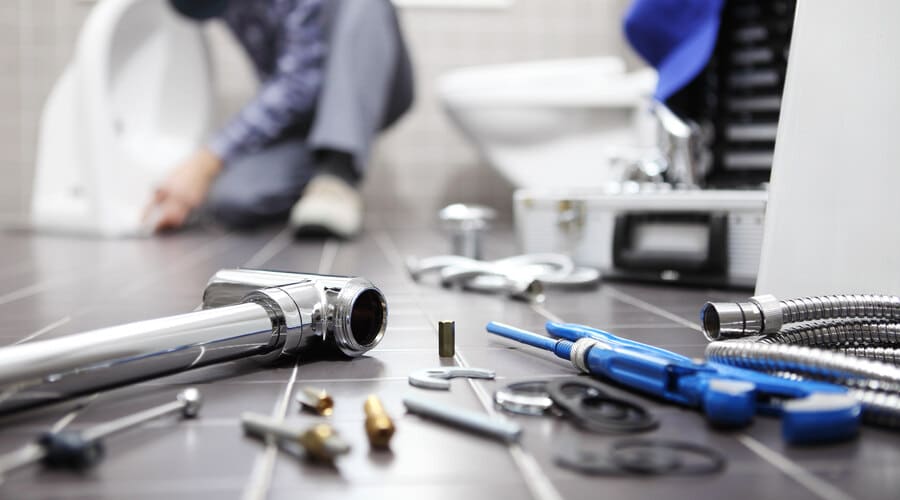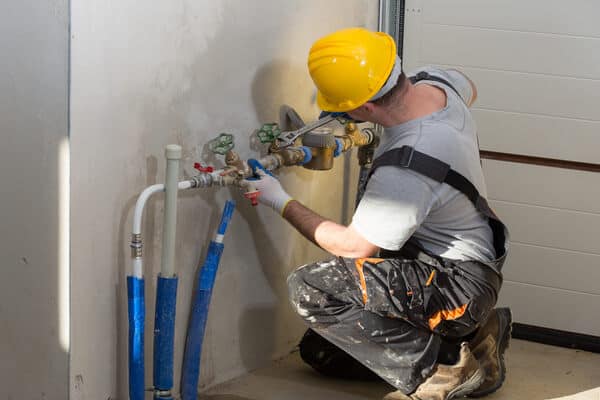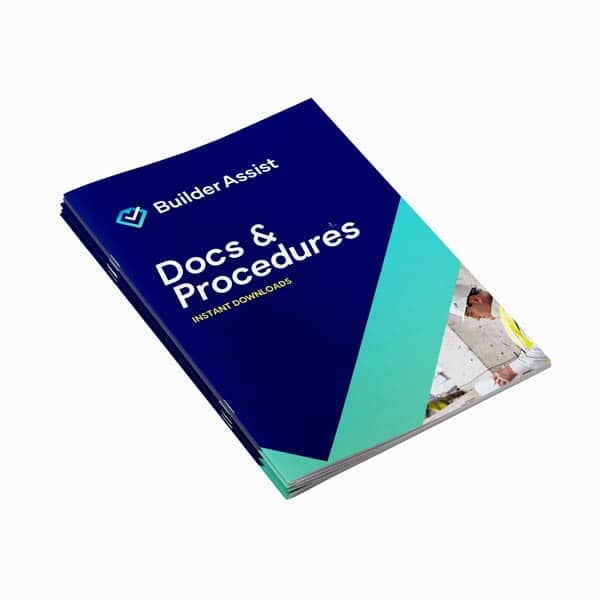
Work undertaken by plumbers on a construction site presents its own set of risks. That’s why, like any trade, there are a number of essential documents and control measures required by plumbers to ensure work is completed in a safe and efficient manner. Importantly, documents like a Safe Work Method Statement (SWMS) for plumbers, and a Safety Management Plan are essential for plumbers.
When used effectively, SWMS for plumbers and other essential documents, ensure safety and regulatory requirements are met.
For more about SWMS for plumbers, read on.

Documents including a Safe Work Method Statement (SWMS) for plumbers, and a Safety Management Plan are essential for plumbers.
Major safety risks for Plumbers
Similarly with many trades, plumbing work presents a number of safety risks. Not only that, plumbers are responsible for identifying hazards on site prior to commencing work.
Here are some of the safety risks associated with plumbing:
- Working at heights: Plumbers are often required to work on roofs and at heights that require a significant level of safety planning.
- Exposed electrical wires: Electrical wiring is a common hazard for plumbers, who may unknowingly come into contact with live wires.
- Confined spaces: Plumbers are often required to work in confined spaces, such as crawl spaces, which can be dangerous if proper precautions are not taken.
- Chemicals and gases: Plumbers work with a range of chemicals, including corrosive materials and gases, which can be hazardous, if not handled correctly.
- Heavy lifting: Carrying heavy equipment and materials can result in musculoskeletal injuries and other health and safety issues.
What is a SWMS for Plumbers?
Safety documentation is essential for plumbers on work sites. Arguably, one of the most valuable documents is a Safe Work Method Statement (SWMS) for plumbers.
A SWMS for plumbers outlines the steps required to complete a specific task safely. It is a Work Health and Safety requirement for high-risk construction work and is often used in conjunction with a risk assessment. Therefore, plumbers are required to follow their site’s SWMS to ensure each high-risk job is completed to the safest identified standard.
What components should be included in a SWMS for plumbers?
In short, a SWMS for Plumbers breaks down the tasks of a job into steps. Each step is reviewed to identify the safest and most logical process for it to be completed. Furthermore, a SWMS outlines the control measures for any risks or hazards identified for each task.
At a minimum, a SWMS for plumbers should:
- Identify ’high-risk construction’ work;
- Specify hazards relating to the high-risk construction work, and risks to health and safety associated with those hazards;
- Outline the control measures to control the risks; and
- Describe how the control measures are rolled out, monitored and reviewed.
Read more about SWMS in our Blog ‘What is a SWMS?’.
What other essential safety documents are required by plumbers?
To reduce the risk of injury, and to control hazards on a project, plumbers should implement the following:
- Safety Management Plan (SMP): A SMP provides the framework to support the management of Work Health & Safety on job sites. Read more about SMPs in our Blog ‘What is a Safety Management Plan?’.
- Pre-Start Risk Assessment Checklist: A Pre-Start Risk Assessment Checklist assists the workplace manager to record and document a pre-start check of potential risks and hazards, prior to commencement.
- Job Safety Analysis (JSA): A JSA is a risk assessment tool used to identify and address potential hazards on a particular job or task. The document breaks down each job into individual steps and identifies the potential hazards associated with each step. Moreover, it outlines the control measures that are implemented to mitigate the hazards. Read more about JSAs in our Blog ‘The purpose of a JSA’.
- Risk Assessment: Risk Assessments identify potential hazards of proposed work, assess risks involved and develop control measures to eliminate or minimize the risk.
What other documents do plumbers need?
Plumbers, like any other business, need to ensure their work is done to the highest standards to satisfy customers and maintain their reputation. Quality Management Plans (QMPs) and Inspection Test Plans (ITPs) are two key tools that plumbers can use to achieve this goal.
- Quality Management Plan (QMP): A QMP is a set of guidelines that ensures that work is done to the highest possible standards. It includes everything a team needs to do their work effectively and consistently, such as activities and resources. Following a QMP can lead to increased customer satisfaction and loyalty, which in turn can boost a brand's reputation and word-of-mouth referrals. Essentially, a QMP helps ensure that work is done well, which can have positive outcomes for both customers and businesses. You can read more about QMPs in our Blog ‘QMP meaning – what is a QMP’.
- Inspection Test Plan (ITPs): ITPs are comprehensive quality assurance documents that set-out the job step critical points at various stages within each process for scheduled inspections and verifications. Plumber ITPs exist for jobs including service trenches, gas in ground supply, gas reticulation, sewer in ground drainage, sewer suspended drainage, stormwater, stormwater suspended and syphonics, water in ground supply, water reticulation and PC fit off. Read more about ITPs in our Blog ‘What is ITP in construction?’.
Builder Assist offers a number of trade-specific safety and quality documentation templates for plumbers that are user-friendly and instantly downloaded. These templates are:
- Industry-leading documentation developed by award-winning industry experts
- Microsoft formatted for easy editing
- Customisable to your company brand
- Inclusive of full instructions on how to use the templates
To purchase a trade-specific template search our documents at Tradespeople Documentation.



